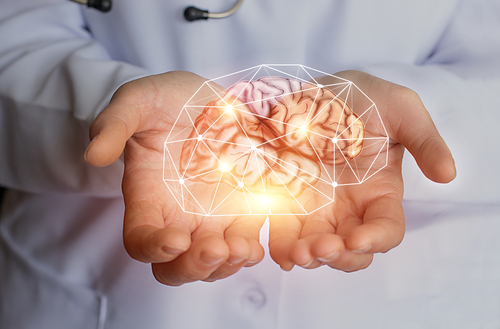Innovative ‘Mini-Brains’ May Help Boost Parkinson’s Research, Study Suggests

Researchers have developed a new way to make miniature 3D versions of the brain by using human stem cells. These new “mini-brains” will allow scientists to observe brain development, test promising new therapies, and study neurological diseases such as Parkinson’s disease.
Findings were published in the study, “Induction of myelinating oligodendrocytes in human cortical spheroids,” in the journal Nature Methods.
Miniature brains, called “organoids” or “spheroids,” enable cell interaction in an environment similar to the human brain.
Prior versions already mimicked the organization of different brain cell types, but they lacked oligodendrocytes, the cells responsible for producing myelin — a protective layer of nerve fibers in the brain. Loss of myelin, or demyelination, impairs nerve cell communication and results in symptoms such as numbness, uncoordinated movement, loss of reflexes, and pain.
Researchers believe oligodendrocytes play an important but poorly understood role in demyelinating disorders such as multiple sclerosis (MS). Including oligodendrocytes into brain organoids may help them understand how myelin is damaged and find ways to repair it.
In a collaboration between Case Western Reserve University School of Medicine, New York Stem Cell Foundation (NYSCF) Research Institute, and George Washington University, the team built on a previous method to generate oligodendrocytes from human stem cells.
The scientists found that a specific combination of growth factors, called PDGF, IGF-1, and T3, enabled the incorporation of oligodendrocytes in organoids, which they named “oligocortical spheroids.”
Join the Parkinson’s forums: an online community for people with Parkinson’s Disease and their caregivers.
They then showed that myelin-enhancing compounds boosted the rate and extent of myelination by oligodendrocytes, indicating that the miniature brain models may be particularly relevant in studies of new medicines to repair myelin.
The team also used the new method to generate organoids from the stem cells of patients with Pelizaeus-Merzbacher disease, a rare, inherited condition characterized by a reduced ability to form myelin. The approach showed that the new organoids successfully modeled the features of the disease. Of significance, independent experiments at Case Western and NYSCF led to the same results with different stem cell lines.
“Spheroids provide a versatile platform for studies of myelination of the developing central nervous system and offer new opportunities for disease modeling and therapeutic development,” the researchers wrote in the study.
“Our new method gives us a clearer picture of how brain cells are functioning and interacting in diseases like multiple sclerosis or Pelizaeus-Merzbacher, and it holds great promise for the development of new therapies to restore myelination,” Paul Tesar, PhD, the study’s senior author, said in a press release, adding that he is looking forward to continuing the partnership with NYSCF.
Tesar won the 2017 NYSCF — Robertson Stem Cell Prize in recognition of his pioneering work on the use of stem cells to discover new therapies for neurological disorders. His NYSCF funding was among the various awards that enabled the study. He is the Dr. Donald and Ruth Weber Goodman Professor of Innovative Therapeutics and an associate professor of genetics and genome sciences at Case Western Reserve.
“We’re grateful for our fruitful collaboration with Dr. Tesar and thrilled that we were able to provide validation for this important technique to ensure it can be adopted by the community,” said Valentina Fossati, PhD, who led the team at NYSCF Research Institute. “We believe this new protocol will elevate research into multiple sclerosis as well as a variety of complex neurological disorders, including Alzheimer’s disease and Parkinson’s.”
Susan L. Solomon, NYSCF’s CEO, said the foundation is committed “to accelerating treatments for neurological diseases, and developing better ways for the community to use stem cells for disease research is a key part of achieving that goal. This new method grew out of a longstanding collaboration enabled by the NYSCF community, and we are incredibly proud of the work that has resulted from this partnership.”






